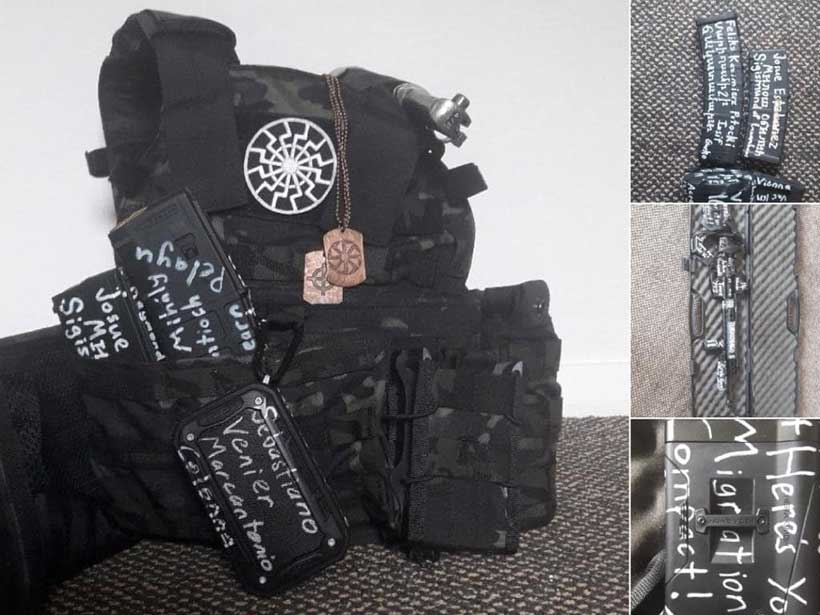
By Zakir Gul and Dr. Ferhat Goktepe*
Far-right violence, right-wing extremism, and racially and ethnically motivated terrorism are on the rise globally—including Western countries such as the United States. FBI Director Christopher Wray has implied that the white-supremacist threat is significant and increasing. A 2020United Nations report and a 2019 report from The Soufan Center show that compared with some Islamic extremist terrorism, racially and ethnically motivated terrorism have occurred more frequently and resulted in more casualties over the last years. According to the Southern Poverty Law Center, the number of white nationalist groups in the United States increased 55 percent between 2017 and 2019, prompting the civil rights organization to conclude that white nationalism poses a serious threat to national security and pluralistic democracy in the United States. The Anti-Defamation League has reported similar findings, noting that “white supremacists have committed 78% of right-wing extremist-related murders” over the last10 years, that right-wing extremists were responsible for 90 percent of domestic extremist-related murders, and that white supremacists, particularly, were responsible for 81 percent of the killings in the year of 2019.
A report from the Federal Protective Services (FPS) within the Department of Homeland Security, however, reported in one of its weekly intelligence briefs that white racially motivated violent extremists are interested in bioterrorism (in particular, spreading COVID-19 coronavirus in public places) and that threat could turn into reality. The FPS noted these racially motivated groups have used virtual environments such as Telegram to spread their violent extremist ideologies and plans. For example, as quoted in the intelligence brief, group members have been instructed to do the following as part of the effort to engage in bioterrorism:
“Spend as much time as possible in public places with their ‘enemies’.”
“Visit local FBI offices and leave saliva on door handles.”
“Spray saliva form spray bottle on the faces of law enforcement.”
“Commit crimes such as arson of a shooting and leave coronavirus laced items at the scene for detectives to find.”
“Spit on elevator buttons.”
“Spread coronavirus germs in non-white neighborhoods.”
The FBI responded to the intelligence information by issuing a warning in March that racist extremist groups (such as neo-Nazis and other white supremacists) are encouraging their members to spread COVID-19 to the police and minority groups such as Jews.
Other racially motivated extremists, however, are not intercepted before they have a chance to execute a successful attack on U.S. soil or elsewhere. In the last five years, for example, numerous media outlets have reported six racially based mass shootings in the United States: in Charleston, South Carolina, on July 17,2015, during which nine African Americans were killed during Bible study at the Emanuel African Methodist Episcopal Church; at the Tree of Life synagogue in Pittsburgh, Pennsylvania, on October 27, 2018; at the Chabad of Poway synagogue in Poway, California, on April 27 2019; at a Walmart store in El Paso, Texas, on August 3, 2019; and near the entrance of the Ned Peppers Bar in the Oregon District of Dayton, Ohio, on August 4, 2019.Outside the United States, mass shootings have occurred at the Quebec (Canada) City mosque on January 29, 2017; at two mosques in Christchurch, New Zealand, during Friday prayers on March 15, 2019; at the Halle synagogue in Germany on October 9, 2019; and at two shisha bars in Hanau, Germany, on February 19, 2020.
Successful attacks such as these not only result in the loss of hundreds of lives but also provide inspiration for others to act in a similar manner. For example, Christopher Hasson, who was stockpiling weapons and ammunition, and planning attacks, was inspired by the manifesto of Anders Behring Breivik, who was responsible for the bombing and shooting rampage in Norway in 2011. The New Zealand Christchurch shooter was inspired primarily by Breivik but also by as well as Dylann Roof, the person responsible for the mass shooting in Charleston. The shooter in the El Paso attack was inspired by the manifesto written by the person responsible for the shooting in Christchurch.
The threat posed by white racially motivated violent extremists is real and serious. The incidents mentioned above illustrate the dire outcome of this threat. The question is: How aware, alert, and ready are we to counter, both tactically and strategically, this local, global, and enormously growing violent extremism?
